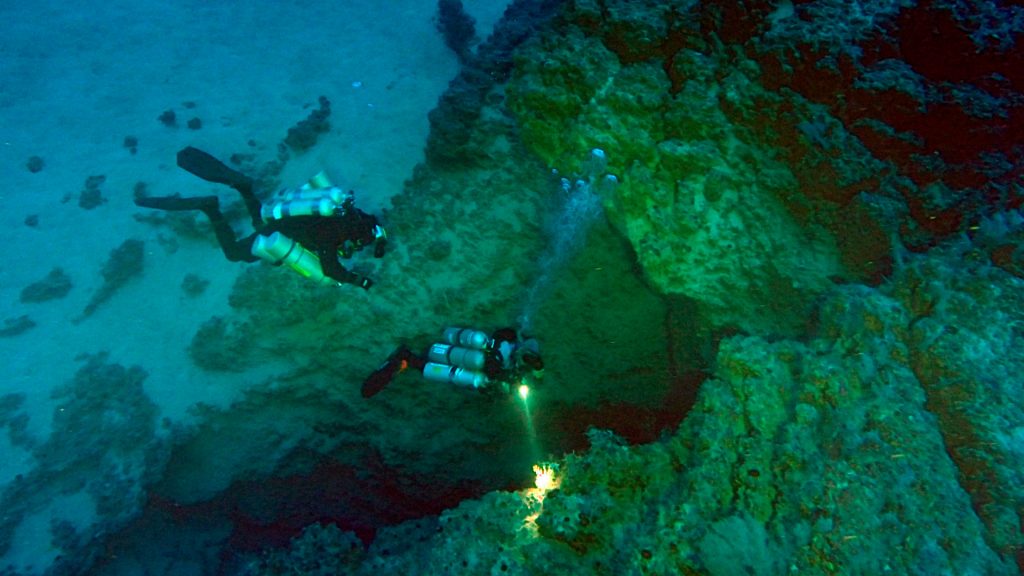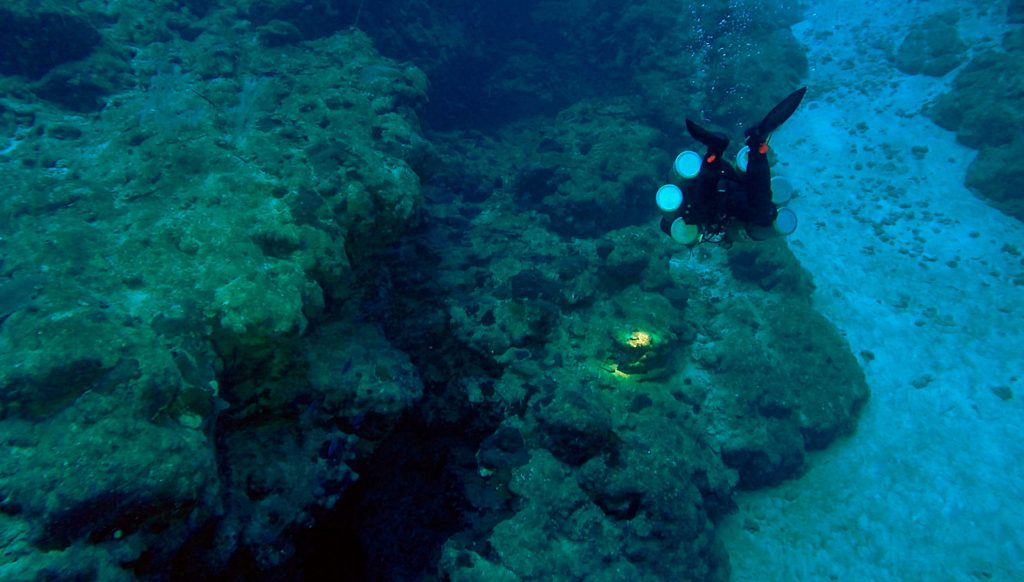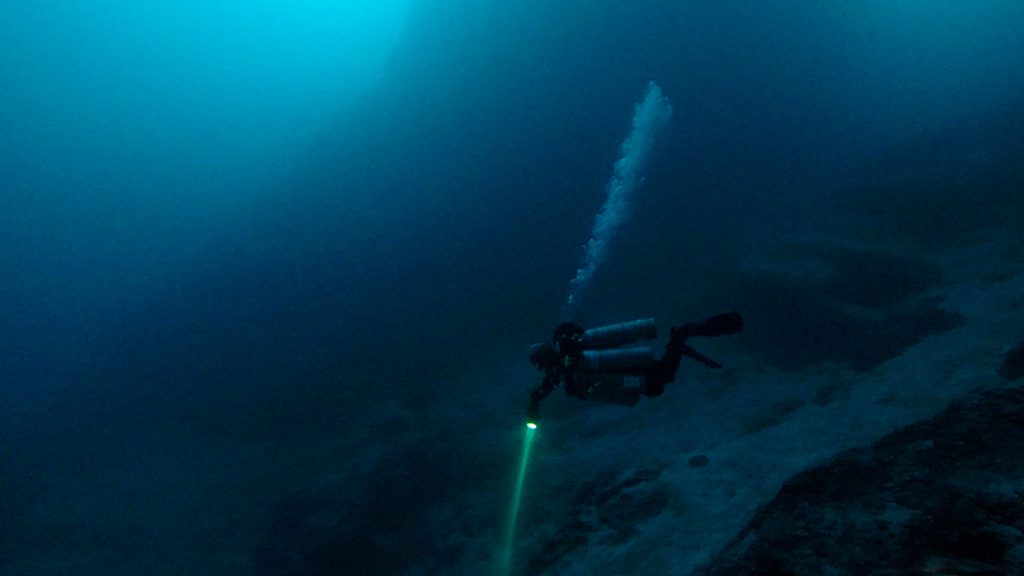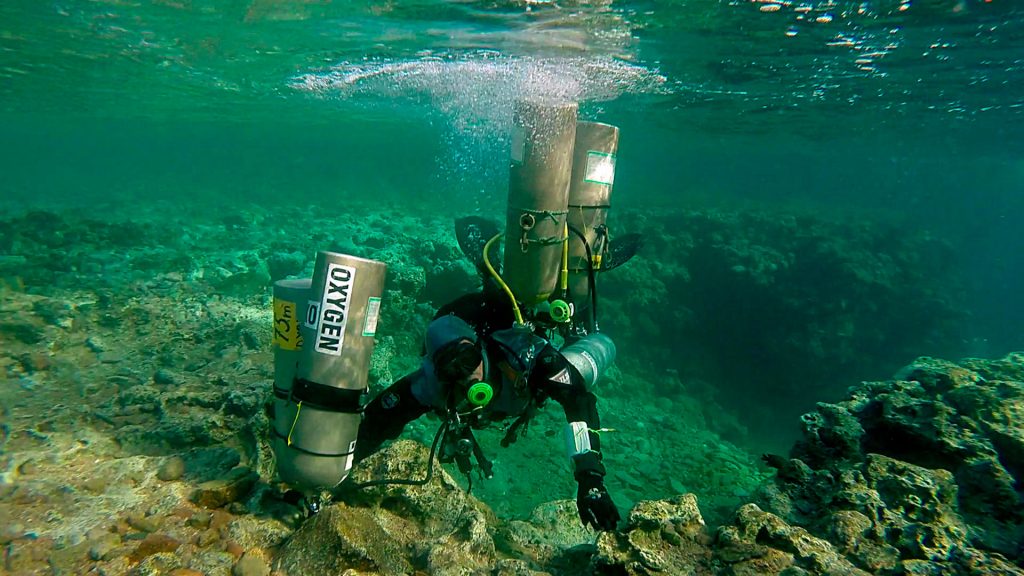
Trimix and Sidemount, is it safe to connect the two?
Looking back at the last 10 years, we can see that the sport called “Diving” is growing exponentially. Great progress in science – decompression, more and more new technological solutions in matters of computers, planners, and finally decompression algorit hardware capabilities. Over these years, we can see that technical diving / trimix have become an integral part of recreational diving, all major vertical training systems have introduced technical training.
A few years ago in “open water” dives, a new hardware configuration – Sidemount – appeard. The configuration itself, although the concept of “open water” is young, has roots and traditions derived from many years before cave diving. In the world of recreational diving, it appeared 3-4 years ago. The aforementioned technical diving, which so boldly established itself in the diving industry, is beginning to look more and more towards configuration.
With over 10 years of experience in trimix diving and four years in Sidemount diving configuration, I decided to begin to combine these two elements in particular, that at present it is hard to find any generally accepted standards and ideas of Sidemount configuration used in deep trimix dives.
This article aims to present my proposals and ideas for combining these two elements, and perhaps find answers to whether or not it makes sense and whether it might be safe. My conclusions are divided into two parts, the first will try to compare the traditional technical two-bottle twinset configuration and my own Sidemount. In the second part I will try to present my own conclusions and ideas on matters of hardware onfiguration for deep dives in Sidemount.

Backmount vs Sidemount configuration in trimix dives.
At the beginning let’s define what is meant by backmount and Sidemount. Backmount assumes the location of the gas tanks to breathe (single cylinder, TwinSet type, etc.) on the back of the diver, usually in conjunction with a displacement device for controlling buoyancy (eg. A set of plate-type and bag). For Sidemount tanks are mounted on the sides of the diver while at the back is only a buoyancy device, typically a set of Sidemount type.
In the case of a TwinSet kit, it consists of two cylinders connected with each other by a bridge valve. And this was the connecting element, the system threads, O-rings and separation valve, is the weakest element of the whole. There may be shock situations underwater or damage in transit with negative effects on the type of uncontrolled leakage from the manifold, will show only during the dive. In this case, the filming process of v-drill valve type may be inadequate (leakage on the separator). In this case, a diver in the BM must ask the partner to provide gas for a long hose, and therefore TwinSet type configuration is a configuration only to dive in the band which is not all applies. A diver in MS has two independent cylinders, which are not connected to each other so that failure of one does not affect the other, which gives it a substantially greater independence.
Technical training often takes place in warm waters, for which we take a dty suit with thin lining. During training we slightly turn valves, learning how to act in case of failure of automatic devices. After returning home, we find the time to check out our capabilities in Polish cold waters. Thicker warmer, maybe some extra vest. And suddenly it turns out that we can barely reach the valves, with the fingertips of dry gloves, elbow leaning with one hand on the other. In Sidemount, cylinders are on the sides of the diver, basically under the armpits (slightly pulled back). Every diver can quickly and without a “strange figures/positions” is able to reach them and spin them in a much shorter time than a diver in the twins. We ask ourselves, whether this difference in speed cornering such type if 30 seconds is significant? For dives at 40, 50 or 60m, probably not, but as we are under water up to 120 m, the seconds and minutes are very important, and every minute at the bottom means more decompression time, a pressure gauge, which is almost “in the eyes” moves us in the direction ofthe 0 digit.

Failure/emergency
Consider a standard type of emergency situation of excitation of an automatic free flow device, the most often freezing or bubbling with machine due to mechanical reasons, eg. sea salt or a grain of sand (common in dives in salty and warm waters ). In this case, a standard procedure in the TwinSet talks about spinning the valve from which the leakage is coming, from and switching to a backup system (second machine). The SM diverjust has to spin the emergency cylinder and go on breathing from the other. You can admit that the diver in the BM is in a better position because the closure of one valve has at all times access to gas left in his two-tank set, and a diver in the SM has only half (more or less). Generally, it would be the case if not for the fact that in Sidemount we have two other outputs, two other procedures. But we can decide to breathe from a cylinderwith automatic excitement to utilize gas from the cylinder (technical manual operation or closing and opening the valve for breathing – used in technical diving decompression cylinders as a “stage”), or we can – as in the beginning, change the tank for a properly working one and try to solve the problem with an emergency automatic device / valve. All the cylinders in MS are within easy reach, we have them “almost” as accessible as our technician does on our service table.
In case of failure of the second degree, we can turn to the second degree and replace the emergency one for a working one (we have a lot of them), but only when using second-degree tightening techniques to a hose length with maximum hand strength, without the use of Finger—tightening wrenches. Always check before diving if II levels are sufficiently tightened. In case of failure of I degree we can turn the whole machine from one cylinder to the other underwater, and despite the flooding degree, the device should work (especially the piston). Of course, after such a dive the device will have to be serviced. We still have one more: the hardest, breathing directly from the cylinder valve hard, but it’s better than nothing. Except forthe first or second-degree substitution, other options are vailable only for divers in MS, with the Twins practically our whole bottom respiratory system is located on the back, or on the edge oftheir reach limits.

Equipment: hoses, arrangement of cylinders, crane, transportation, etc.
Some of you might be wondering, why MS divers have such long hoses as they are so independent? They are there so that they could be valuable partners for BM divers (TwinSet, single cylinder). If someone dives only in Sidemount sets, having long hose is an unnecessary complication.
A huge advantage of the SM configuration is the horizontal arrangement of cylinders (against your skin) according to our silhouette (cylinders trim), which is a much smaller resistance flow and at great depths is one ofthe most important elements.
Is it possible to apply the techniques of cylinder arrangement along the body with twinset type configuration? Probably yes, but it requires the use of a system of several d-rings, as in MS, which at the current fashion type, configuration “DIR” is “unethical” 🙂 ..I personally more often train students in twinsets system with just two hip d-rings on one side. Anyone can try and choose what is best for him.
A Very nice advantage of MS is that during long decompression, especially in the sand in shallow water can undo/disconnect most of the tanks and lay awaiting the end of the dive …maybe it seems funny, but after 2-3 hours at 6 meters, everything convenient is worth it’s weight in gold.
What is with these cylinders on the surface, because diving is not only what is under the water, but that somehow we need enter it. In the current “office” civilization more and more people are complaining about back pain and trying to ease it. Wearing a twinset, weighing often not much less than the wearer (petit ladies) is often a challenge, especially as we reach
the water by a narrow path, sometimes after stairs, through the trees. With the SM, we carry tank after tank and being in the water we suit up. Is it not easier?
I often dive in the Baltic Sea with large inflatable boats (RIB). Suiting up with a twinset, on a rough sea on a boat is a difficulty and requires the assistance of another person, before everyone was suited up the rest often have had enough. With the SM, We sit on the “balloon” and independently pin one tank to the other ourselves… and again we are self-sufficient ?
Before we go into the water we need to reach it. A Twinset requires a careful arrangement in the car trunk/boot, preferably at the bottom and flat because it is sufficient that a pound of ballast rubs against the cylinders and may damage the connecting bridge. In MS, there are two loose cylinders, where we put it does not matter, the coat/cover of the cylinder and a single valve, is rather hard to damage (although it is theoretically possible ?).

What is a deep dive below 100m like? Solo or in a team?
Personally, I believe and pass on this knowledge to my trainees, that technical diving should only be done in a team. We must realize that at such large depths, divers are dependent only on themselves, there is no rescue service there so far out and deep, and the most important and also the most subject to failure of all parts of this puzzle is our head. The effects of nitrogen narcosis and activities, CO2 or the depth itself, always are and always will
accompany us during deep dives, the question is how we learn to operate with them. And here is a very important point for us – if we have any emergency situation, we should deal with it always by helping ourselves, but the fact that we can see past our partner is an amazing strength… 80: self—sufficiency, but always in a team. And such is a self—sufficient diver in MS, slightly largerthan a diver in the BM.
To sum up, I did not want to convince anyone to Sidemount as the only right configuration, because it is not. All the time I run a lot of training for divers in twinset, this is a great and safe configuration, of course, if one knows how to handle it properly. In my article I just wanted to show that it is not true that Sidemount is not suitable for deep dives, it is suitable for most, and even that what I showed above has some minor advantages, even if symbolic, but when we are deep in the water, these symbols can give us more chances of survival.
Cezary “Czaro” Abramowski
TDI Sidemount Instructor Trainer
